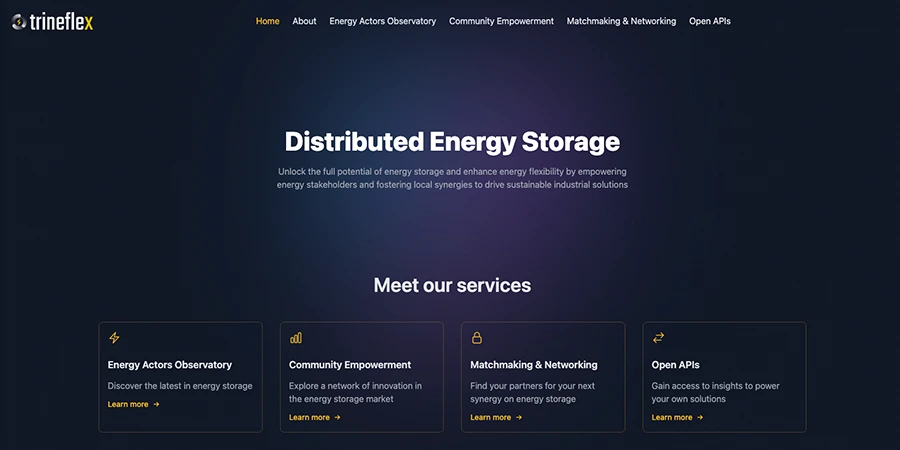· Sustainloop editorial team · regional-ecosystems · 6 min read
Energy Communities
Energy communities and their role in the energy transition over Spain, Italy, and Greece
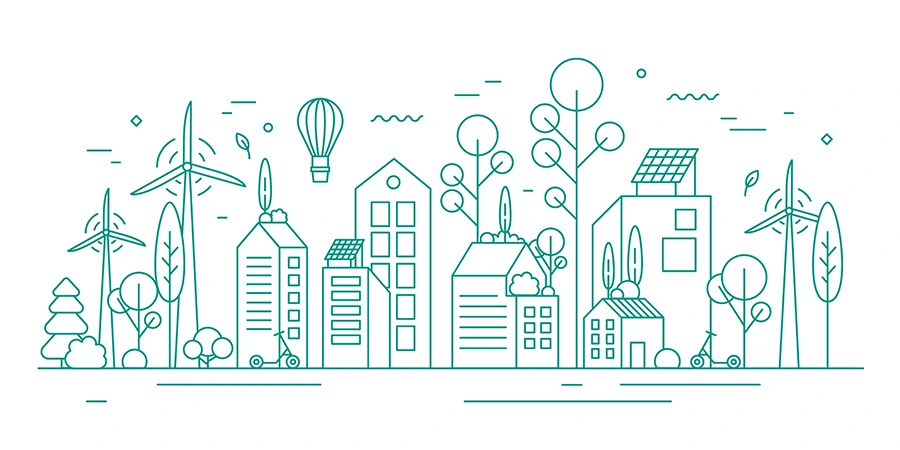
Energy communities represent a transformative approach to energy management, empowering citizens to become active participants in shaping their energy future. These collective entities, organized as associations, cooperatives, partnerships, or non-profit organizations, enable citizens to participate in energy generation, consumption, and distribution, fostering a more decentralized and democratized energy system. By harnessing the collective energy potential become active participants, energy communities provide flexibility to the energy system through demand response and storage mechanisms, driving the energy transition towards a cleaner, more sustainable future. Simultaneously, they advance energy efficiency, supporting the development of renewable energy projects, and enhance public acceptance of these initiatives. Finally, they make it easier for citizens, together with other energy actors, to collaborate and invest in energy assets, contributing to local growth and the creation of employment opportunities in their communities.
In 2019 the European Union in an effort to overhaul its energy policy framework adopted the “Clean energy for all Europeans” package that aims at ensuring a clean and fair energy transition at all levels of the economy and helping to decarbonise EU’s energy system in line with the European Green Deal objectives. Through this package the EU introduced for the first time the concept of energy communities in its legislation. Citizens and consumers assume a central role in the renewed EU energy system and gain better access, more flexibility, and the power to take their own decisions on how to produce, store, sell or share their own energy. This democratization of energy and decentralization of the energy system not only addresses energy poverty and protects vulnerable citizens but also strengthens energy security, fosters economic prosperity, and promotes social equity, making it a cornerstone of a sustainable and equitable energy future for the EU.
The EU Renewable Energy Directive that was revised in November 2023 sets a binding overall renewable energy target of at least 42.5% by 2030. The Directive explicitly promotes the inclusion of renewable energy communities in urban planning, infrastructure development, and heating and cooling systems, recognizing their potential for localized and citizen-driven energy solutions. Member States are encouraged to integrate renewable energy communities into national planning and to remove barriers that hinder their participation. These communities are also seen as vehicles for enhancing public acceptance of renewable projects and decentralizing energy production, thus contributing to energy resilience, affordability, and citizen empowerment across the EU.
By analysing an open dataset of citizen-led energy initiatives and projects in Europe we can deduce several insights on the role of energy communities in the energy transition. Spain is boasting the most energy communities, with 237 established entities. A geographical distribution map indicates a concentration of these communities in the eastern and north-eastern regions of the country. Energy production emerges as the primary activity in over 80% of these communities, with solar energy having the largest share. Distribution and energy services are next, accounting for 27% and 21.5% of the community activities, respectively. Within the distribution category, energy trading and self-consumption are the most prevalent subcategories, while supporting self-consumption and energy storage are the popular choices among the energy service offerings. The establishment of energy communities in the country has witnessed a surge after 2017. While data on the establishment date was available for only 40% of the identified communities, more than 25% of them were founded prior to 2010. This provides a solid foundation for the continued growth of energy communities in the country.
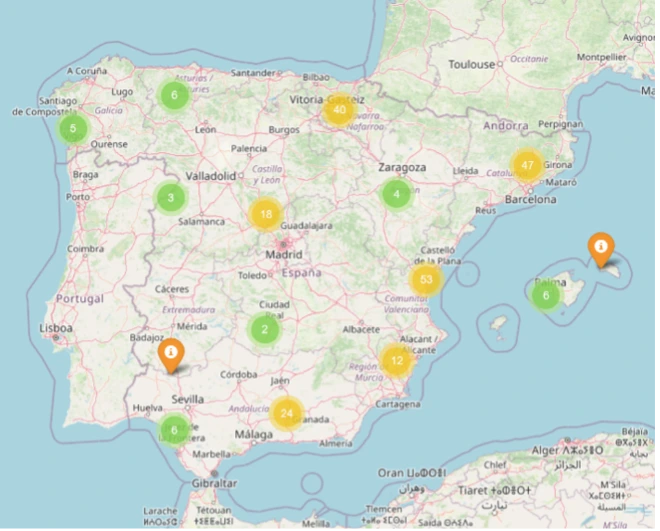 | 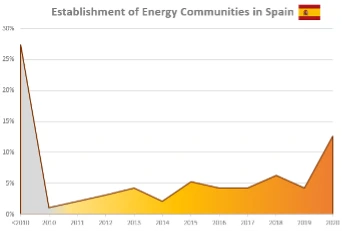 |
Italy’s northern regions stand out as the preferred locations for establishing energy communities, with a concentration of over 75% of the country’s 196 energy communities. This geographical distribution highlights the regions’ commitment to sustainability initiatives and the potential for fostering community-based energy projects. Energy production reigns supreme with almost 90% of communities employed under this category. Solar energy (58%) stands as the primary power source, followed closely by hydropower (23%), while there are a notable 11% utilising biofuels for their energy production needs. Distribution activities, encompassing grid operations and energy trading, occupy the second position at around 15%. A minority of energy communities, accounting for about 5%, have ventured into energy services, with a focus on mobility and electric vehicle solutions. Among the three countries, Italy boasts the highest proportion of energy communities (7%) engaged in information and awareness-related initiatives. Additionally, a substantial 16% of communities are involved in activities concerning agriculture and energy, reflecting the country’s integration of energy production into agricultural practices. In Italy, data on the founding date of nearly one-fifth of the identified energy communities is missing. The yearly evolution on the available data demonstrates a mild but noticeable increase in the establishment of energy communities in recent years. However, more than two-thirds of the identified communities were already established before 2010, with some dating back to the early and mid-20th century. This indicates the existence of a long-standing tradition of cooperative culture in citizen-driven energy initiatives across the nation.
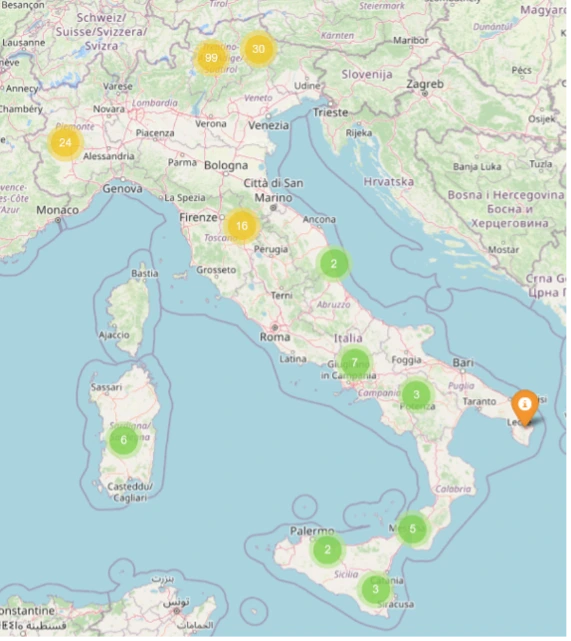 | 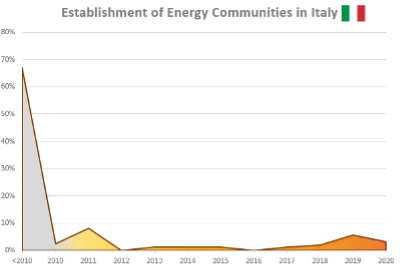 |
The data sources for Greece unfortunately lacked comprehensive information on the specific registered activities of the energy communities. As a result, over two-thirds of the 178 entries in the dataset were assigned only the top-level categories of Production, Distribution, Energy services, and Information and awareness. Our analysis of the rest of the communities where more details were available, revealed that 43% are engage in energy production, with solar energy being the dominant source. Other energy sources such as wind, hydropower, biofuels as well as co-generation are also present, distributed relatively evenly among the identified communities with percentages ranging from 4% to 6%. Grid operations, falling under the distribution activities category, are also well-represented, with 18% of communities involved in this domain. Notably, a substantial 55% of communities engage in other activities, a category that encompasses a wide range of initiatives. The geographical distribution of energy communities in Greece shows a concentration in northern and central regions. Concerning the evolution of establishment of energy communities in the country, the vast majority reaching a remarkable 96%, were founded after 2018. This trend reflects the growing interest of citizens and the private sector in participating in energy initiatives, particularly those related to renewable energy production and distribution.
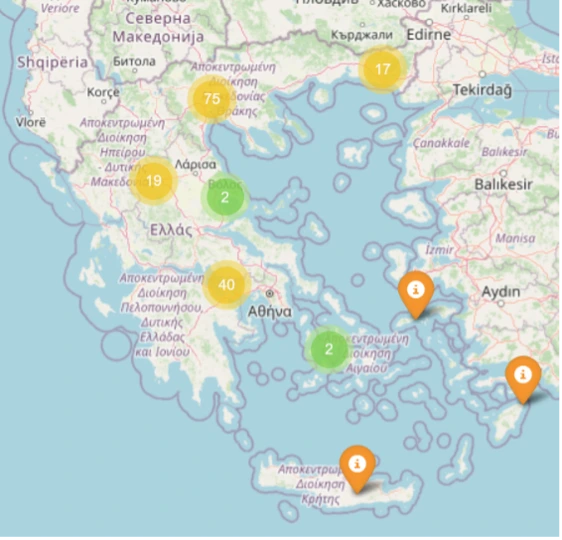 | 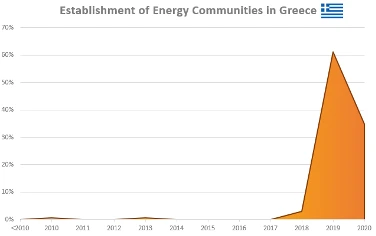 |
